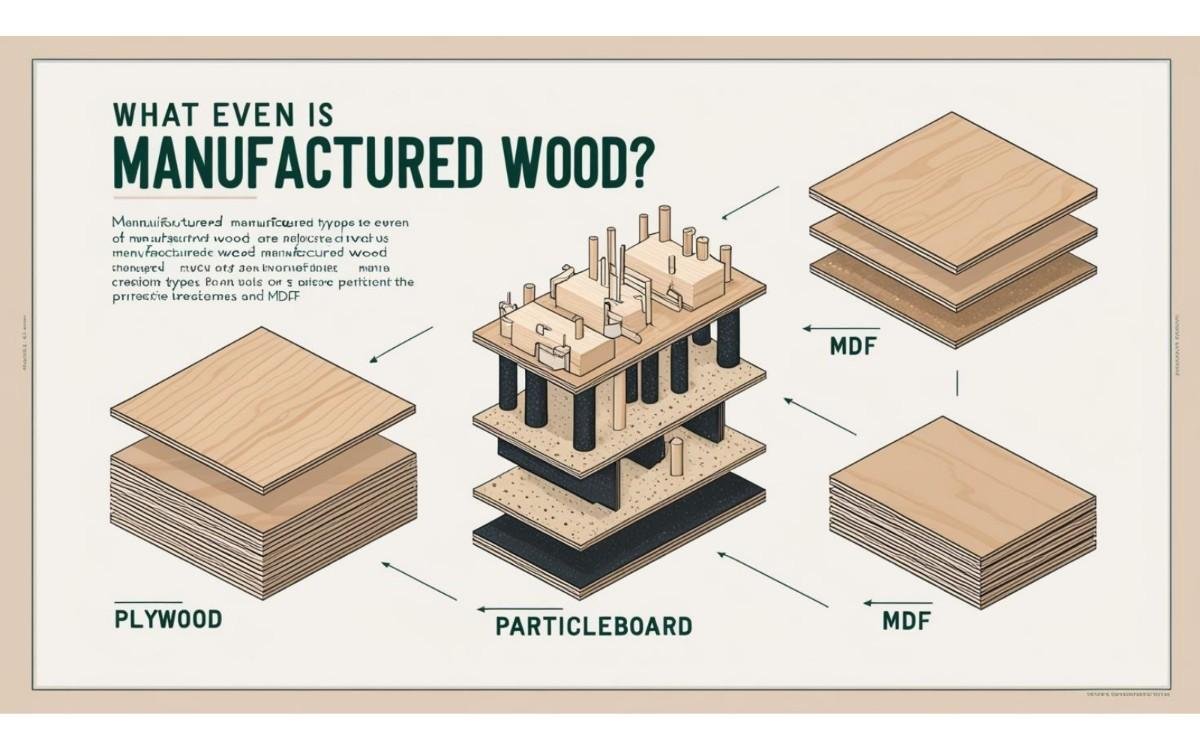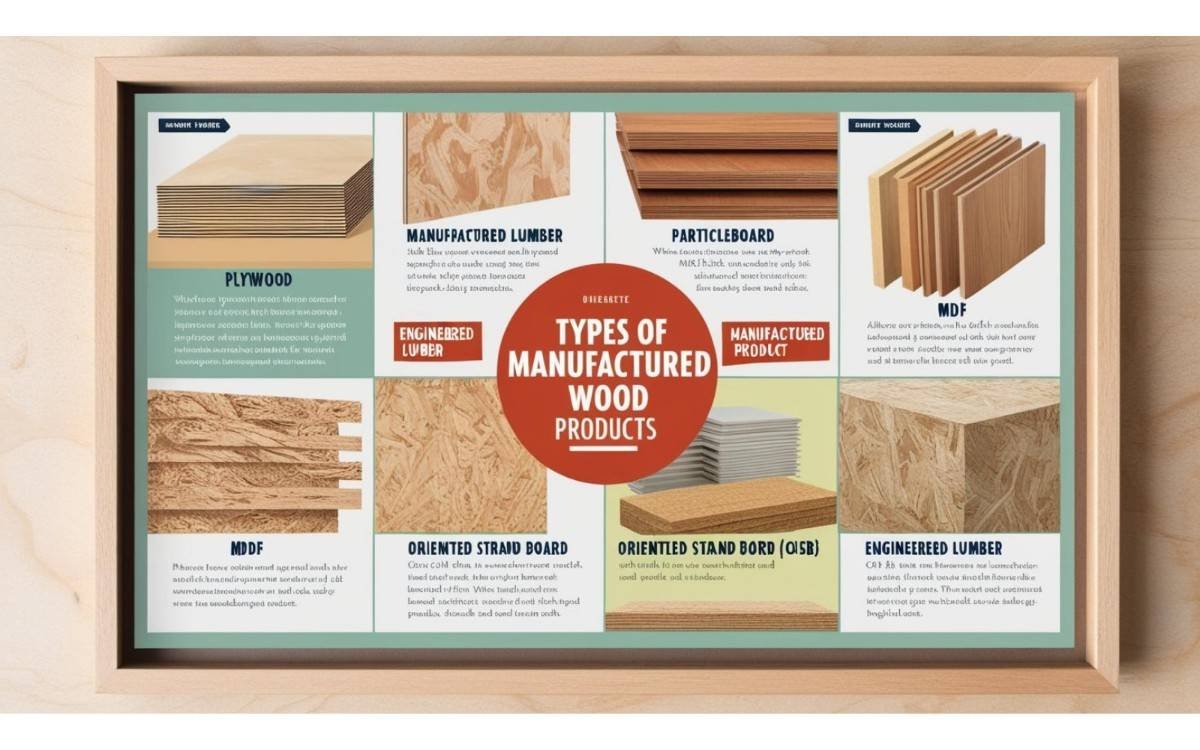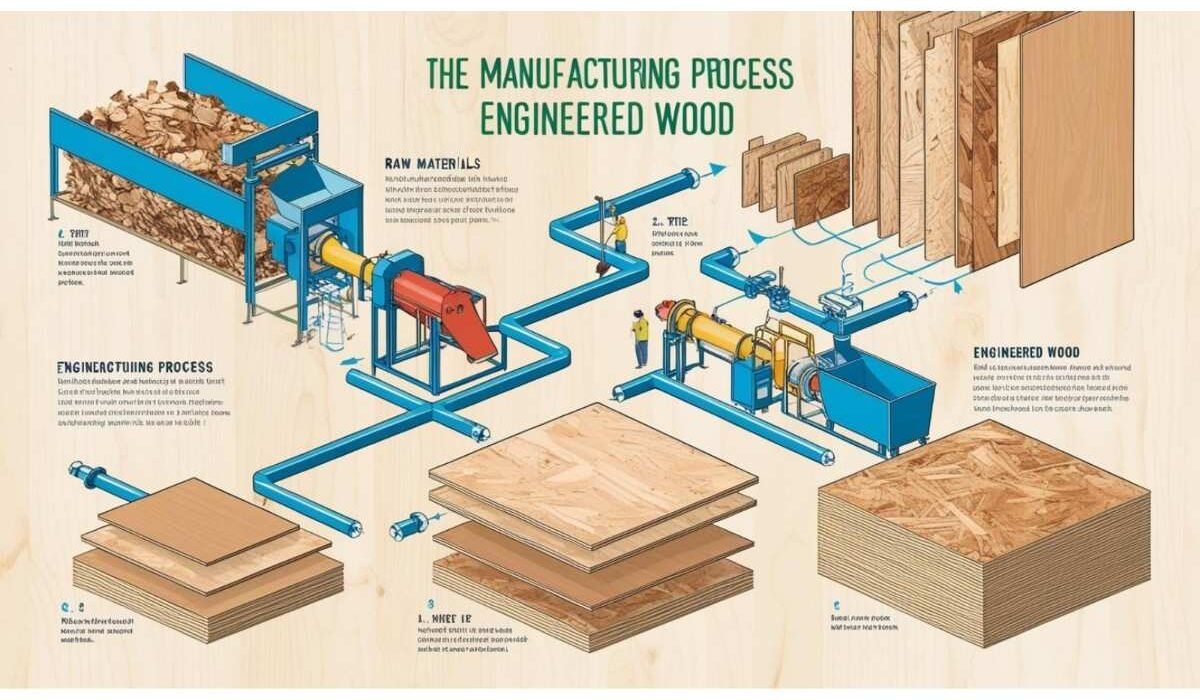A journey from woodchips to wonder
Let me tell you a story.
It starts in a forest. Or maybe in a lumber yard. But definitely with a tree.
And not just any tree. A tree that’s about to live a second life—as manufactured wood.
Yep. This blog is all about how the magic happens. How we go from raw, rugged timber to sleek engineered panels that build homes, furniture, floors—and dreams. Dramatic? Maybe. True? Definitely.
Let’s jump in.
First Things First: What Even Is Manufactured Wood?

Okay, before we go deep, let’s get the basics straight.
Manufactured wood is also called engineered wood. It’s made by bonding together bits of real wood—like fibers, particles, or veneers—with adhesives.
Why?
Well, real solid wood has its flaws. It warps. It swells. It can be expensive. Manufactured wood solves all that. It’s consistent, strong, and often cheaper.
And you’ve seen it everywhere. In floors. Cabinets. Doors. Even those IKEA bookshelves (yep).
Step 1: Harvesting the Raw Stuff
It all starts with logs.
Logs come from forests, often sustainably harvested. If you’re working with a good timber supplier, they’ll usually use certified wood—less harm, more charm.
The logs are selected based on what kind of manufactured wood they’ll become. Some get shredded. Some sliced. Some peeled like a potato.
Every step depends on the final product.
Step 2: Break It Down – Wood Gets Torn Apart
Now, this is where things get intense.
Logs are broken down into:
- Wood particles (for particleboard)
- Wood fibers (for MDF)
- Thin veneers (for plywood)
- Laminated sheets (for engineered lumber)
Imagine a giant shredder. Or a hot knife slicing paper-thin sheets from a log. That’s kinda how it looks in these factories.
This isn’t your friendly hardwood manufacturers garage setup. These are serious machines doing industrial work.
Step 3: Drying the Wood Bits
Wet wood is useless in this process. So—dry it out.
The chips or veneers go into massive kilns or dryers. Heat, airflow, and sometimes even a little science magic pull the moisture out.
Too much moisture? The final engineered wood products will fall apart.
Too dry? It’s brittle and prone to cracking.
Balance is key.
Step 4: Add the Secret Sauce – Adhesives & Resins
Now for the glue.
This step is where manufactured wood earns the “engineered” part. Resins and adhesives bind the broken pieces together.
Think of it like a wood smoothie—with glue.
These adhesives are high-tech. Some are waterproof. Some are heat-resistant. Some reduce emissions. Cross your fingers that you’re buying from eco-conscious mass timber manufacturers who use low-formaldehyde options.
Step 5: Press It. Mold It. Make It Beautiful.
Here comes the pressure.
Literally.
The wood bits and glue are placed into molds or forms. Then? Pressed. Hard.
Hard.
Like 600 to 800 pounds per square inch hard.
This is how we get those flat, uniform panels we love so much. Panels that become your bookshelf. Or your kitchen floor.
Step 6: Cool, Trim, and Cure
After pressing, the board’s still warm. Still flexible-ish.
So they cool it down.
Once cooled, it gets trimmed. Sanded. Smoothed. Any rough edges? Gone. Thickness too uneven? Fixed.
Some boards are left as-is. Others get laminated. Or finished with veneer.
Then they cure. Final setting. Like baking a cake, but for wood.
Types of Manufactured Wood – There’s a Bunch

Let’s not pretend manufactured wood is one thing. It’s a family. A big one.
Here are the popular kids:
- Plywood: Thin sheets glued together in layers, each one rotated. Strong. Reliable.
- MDF (Medium-Density Fiberboard): Made from wood fibers and glue. Smooth. Great for painting.
- Particleboard: Cheap, not super strong, but fine for furniture backing and cabinets.
- OSB (Oriented Strand Board): Big strands of wood in cross-patterns. Used in construction.
- CLT (Cross Laminated Timber): Super strong, thick slabs of layered wood. A favorite among cross laminated timber manufacturers.
- LVL (Laminated Veneer Lumber): Engineered for strength. Often used in beams and joists. Think Boise Cascade I Joist products.
Each one is built for a purpose.
From Panel to Product
So, what happens after?
Those panels end up with companies like the wood flooring company or the hardwood flooring company. They shape, cut, and finish them into floorboards, planks, and tiles.
When it comes time for homeowners or contractors to install, especially in installing engineered hardwood flooring, they’re thankful for the stability manufactured wood provides. It doesn’t shrink. Doesn’t buckle. Makes life easier.
Why Go Manufactured?
Here’s why it’s winning hearts:
- Cost-Effective: Way cheaper than solid hardwood.
- Eco-Friendly: Uses more of the tree. Less waste.
- Stable: Doesn’t warp with moisture or heat.
- Versatile: From luxury flooring to budget furniture—it does it all.
Not bad, right?
Who’s Behind All This?
The real MVPs?
The mass timber manufacturers and engineered wood products companies that make the stuff. Brands like Boise Cascade are well-known. Others focus on sustainability. Some target design. All part of the machine.
And let’s not forget the wholesale lumber suppliers. They move this stuff around—getting it to warehouses, workshops, and retail floors.
Without them? No product. No progress.
A Note on Safety and Quality
Look. Not all manufactured wood is equal.
Cheap ones can contain high formaldehyde levels. Poor quality glue. Bad construction.
So, always buy from legitimate sources. Certified by regulators. Good reviews. Better materials. Partner with an experienced timber supplier who knows their stuff.
And if you’re ever in doubt? Ask. Email. Call. It’s your money and your home. Make it count.
Wrap It Up – The Wooden Truth
Manufactured wood isn’t fake wood. Let’s kill that myth.
It’s engineered wood. Built with precision. Designed with purpose.
From sustainable forests to smart factories, to stylish homes—it’s got a whole journey. And next time you walk across a sleek wood floor or open a new cabinet? You’ll know.
You’ll get it.
Because behind that polished surface lies a process full of science, grit, and a whole lot of glue.
So yeah. That’s how manufactured wood is made.

